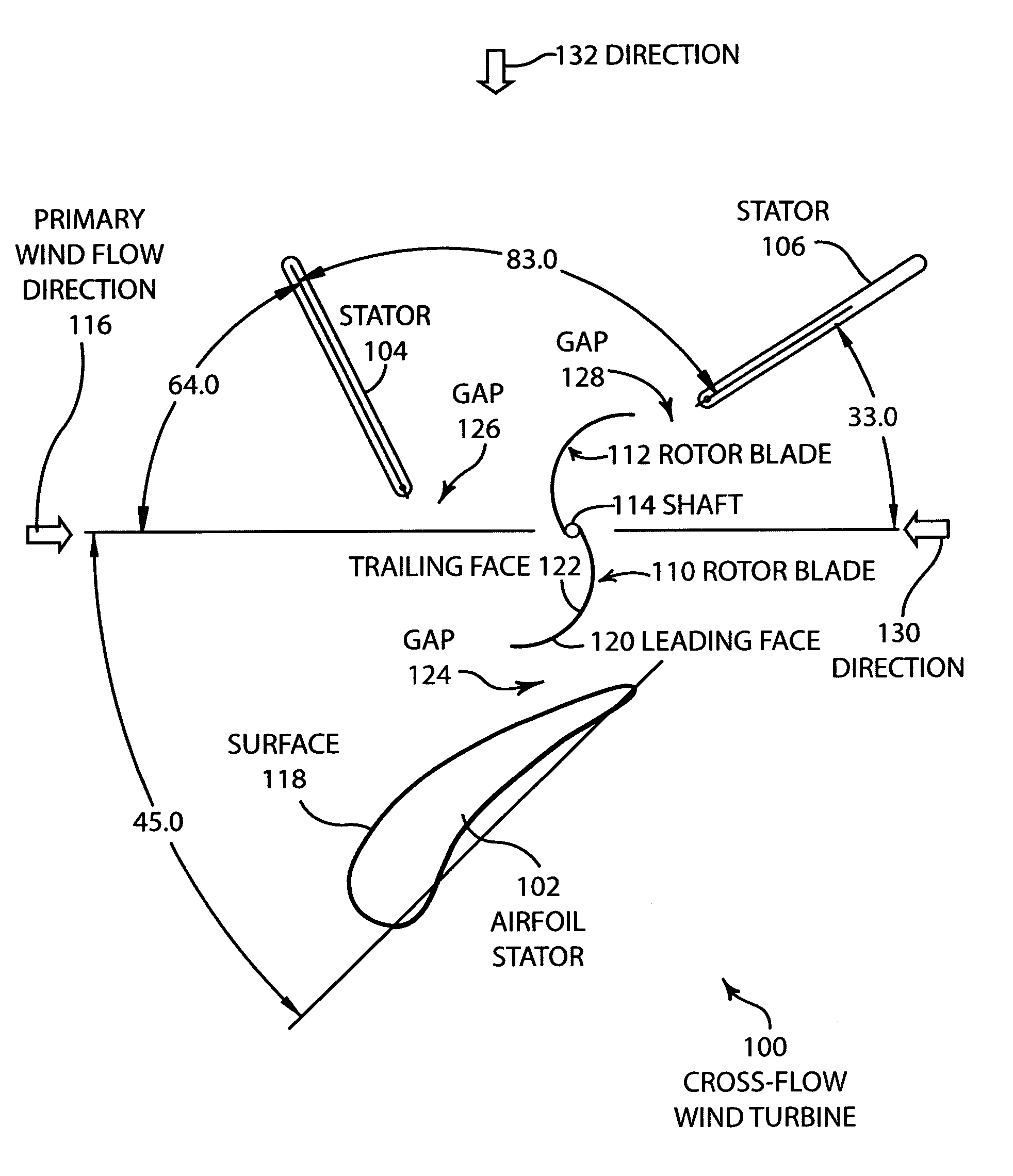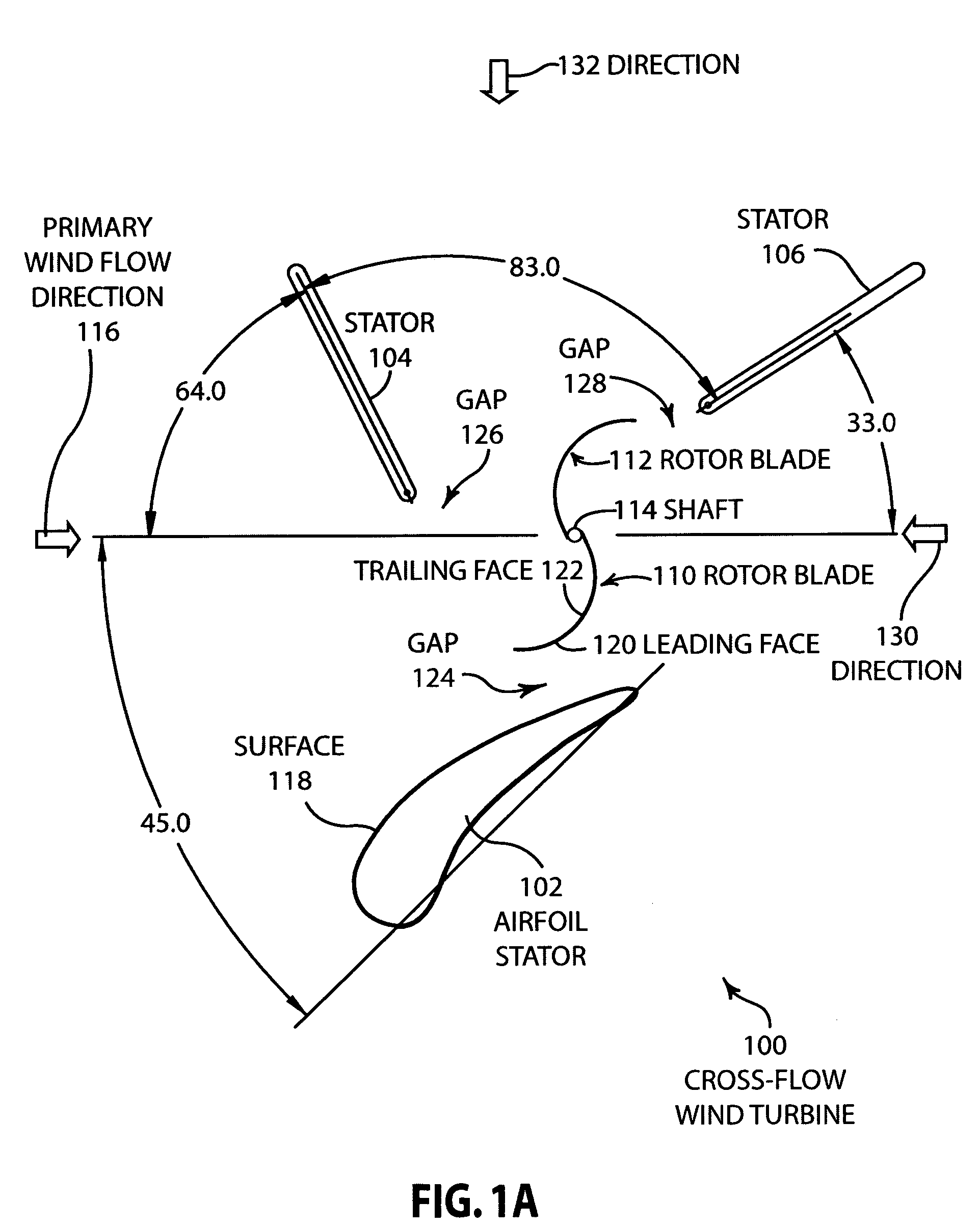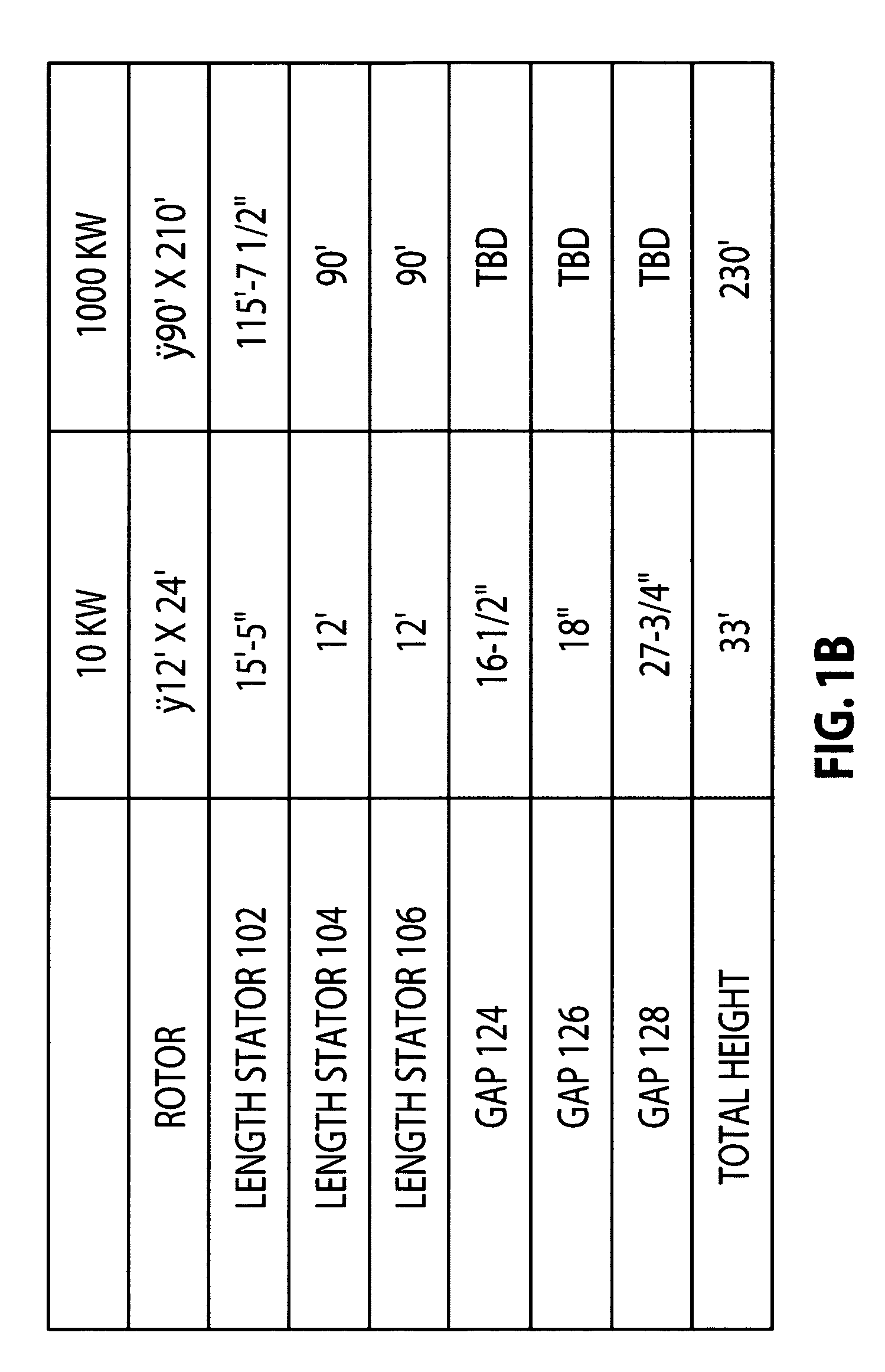Cross-flow wind turbine
a wind turbine and cross-flow technology, applied in the field of wind turbines, can solve the problems of inefficiency of axial-flow wind turbines, inability to extract power from wind energy, and high cost of braking systems and systems for feathering the blade angle, and achieve the effect of increasing efficiency
- Summary
- Abstract
- Description
- Claims
- Application Information
AI Technical Summary
Benefits of technology
Problems solved by technology
Method used
Image
Examples
Embodiment Construction
[0052]FIG. 1A is an illustration of one embodiment of a cross-flow wind turbine 100. The cross-flow wind turbine includes an air foil stator 102 that is fixed, stator 104 that is fixed and stator 106 that is also fixed. The rotor 108 rotates in response to forces created by wind. Rotor 108 includes rotor blade 110, rotor blade 112 and a rotating shaft 114. The cross-flow wind turbine 100, illustrated in FIG. 1A, is designed for maximum efficiency for wind flowing in a primary direction 116 which may be aligned with the prevailing wind at a specific geographical location. However, the cross wind flow turbine 100 also produces high efficiencies for winds flowing from other directions, as described in more detail below with respect to FIG. 3.
[0053]As also shown in FIG. 1A, the angular positions of the stators are shown with respect to the primary wind flow direction 116. The cross-flow wind turbine 100 that is illustrated in FIG. 1A shows each of the elements generally in their relativ...
PUM
 Login to View More
Login to View More Abstract
Description
Claims
Application Information
 Login to View More
Login to View More - R&D
- Intellectual Property
- Life Sciences
- Materials
- Tech Scout
- Unparalleled Data Quality
- Higher Quality Content
- 60% Fewer Hallucinations
Browse by: Latest US Patents, China's latest patents, Technical Efficacy Thesaurus, Application Domain, Technology Topic, Popular Technical Reports.
© 2025 PatSnap. All rights reserved.Legal|Privacy policy|Modern Slavery Act Transparency Statement|Sitemap|About US| Contact US: help@patsnap.com



